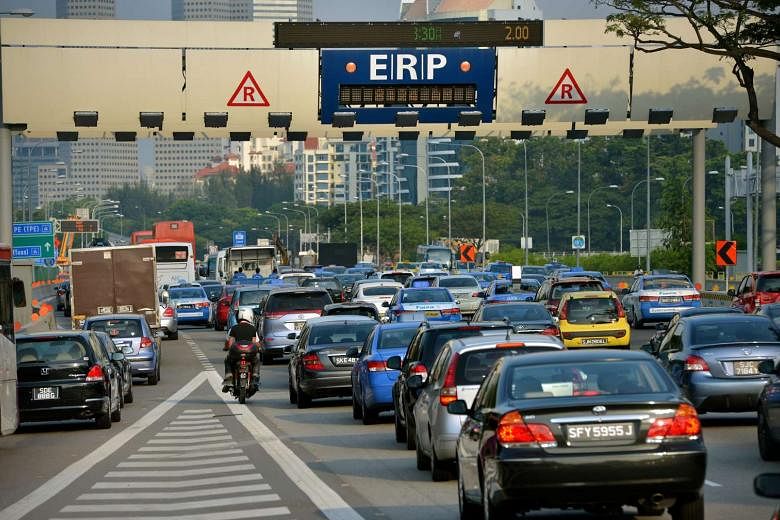Singapore has cleared the way for its next-generation Electronic Road Pricing (ERP) system, which will have islandwide coverage and the ability to charge according to distance travelled.
It will be built by local company NCS and Japan's MHI Engine System, Land Transport Authority chief executive Chew Men Leong announced yesterday.
The new system will replace the current gantry-based ERP system in place since 1998. It will be rolled out from 2020.
There will be an 18-month transition period between the old and new systems, when motorists will swop their current in-vehicle unit for a sophisticated, smartphone- size on-board unit.
Among other things, this unit will be able to alert drivers of priced roads well in advance, before turn-offs to alternative routes. It will also inform them of charges and provide real-time traffic information. LTA said drivers armed with this information can better decide when to drive, which route to take or leave the car at home and take public transport instead.
The Government will foot the bill for the first on-board unit.
During the transition period, motorists can expect no change to the current charging regimen. After the transition phase, LTA will look into the option of distance-charging, as the technology is in place.
If LTA goes down that road, it could mean significantly higher ERP charges for road users with high mileages, such as taxi drivers, deliverymen and bus operators.
Mr Chew said there was no timeline for the implementation of distance-charging. But other functions of the new system will be available from day one. These include real-time traffic information, coupon-less streetside parking and automatic payment for offpeak car owners who drive during peak periods.
This means the system, which uses satellite navigation technology, has islandwide coverage. In places where coverage may be weak, such as in tunnels or under viaducts, signal beacons will be in place.
Mr Chew said the winning bid was superior to the one submitted by ST Electronics, the other bidder. At $556 million, it will cost less than half the $1.2 billion that ST Electronics had sought.
National University of Singapore transport researcher Lee Der- Horng said that when the new road-pricing system is in place, Singapore can rethink current methods of curbing car demand.
"It can help us do away with the current buffet-style certificate of entitlement (COE) system and move towards an a la carte system based on actual mileage clocked."
"Currently, our COE system actually encourages vehicle owners to drive as much as they can since the (big) payment has already been made," Professor Lee said."It is just like we tend to eat more than we should at buffets."


